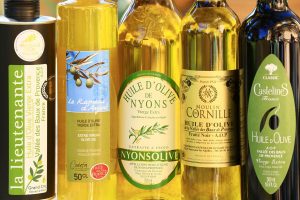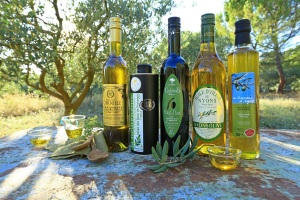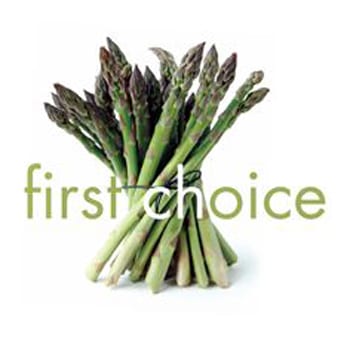Choosing the Right Olive Oil for Your Dishes

There’s more to olive oil than you might think.
While many might take a “one size fits all” approach to drizzling it, olive oil actually has complex flavour profiles which can make, or break a dish.
Much of the world’s olive oil is produced in Greece or Italy, but French olive oil producers are enjoying a growing profile.
The Chefs’ Forum works with Olivence, the Provence Olive Oil Society which brings together, for the first time, five producers from PDO areas In Provence where olive oil is created in small craft units and in many cases still harvested by hand.
 The oils in the Olivence family can be broadly categorised into three flavour categories: Intense, subtle and ancient.
The oils in the Olivence family can be broadly categorised into three flavour categories: Intense, subtle and ancient.
Each have a unique flavour profile that works with different ingredients to enhance and compliment the flavours.
Fabienne Roux is part of the Olivence association and director of the Haute Ecole of olive oil tasting.
She said: “The difference between olive oil and wine is that you can keep wine for a long time.
“You cannot keep olive oil.
“You need to have it as fresh as possible.
“If it is fresh it will smell of olives. Some oils do not smell or taste of anything and that is because they are not fresh.
“After you have smelled the oil, put a small amount in your mouth. The temperature of your body will warm the oil and the aromas will be easier to identify.
“Olive oils have anything from three to 100 different aromas – it all depends on the quality.
“Usually you will have some fruit aromas – fruit and vegetables and fresh herbs. The aromas come from the area and the land where the olive trees grow so olive oil from Provence often has notes of almond, fresh herbs, tomatoes and aubergines.
“The colour is also part of the identity.
“Olive oil from a very sunny place will be more yellow than one from a cooler part of the area.”
FLAVOUR PROFILES:
Intense: This is obtained by using fresh olives which are harvested before maturity. These oils generally have herbaceous and plant aromas and light to pronounced bitterness with flavours that linger on the palate.
Matches: Raw vegetables (tomatoes, aubergines, cauliflowers, carrots), cooked vegetables (summer and winter vegetables), leguminous plants (lentils, split peas), white and red meats (veal, beef, pork), starches (potatoes, pastas, rice), offal, games, cabbages.
 Subtle/ripe and fruity: This is obtained by harvesting olives that have reached maturity.
Subtle/ripe and fruity: This is obtained by harvesting olives that have reached maturity.
The oils have aromas of dried, ripe or red fruit, or are floral with light plant notes. They are generally sweet and light and have a soft feel in the mouth.
Matches: Delicate fishes, poultries (chicken, guinea fowl), raw vegetables (green salads, corn salad, carrots), cooked vegetables (summer and winter vegetables), pastries, desserts, sweet creams, potatoes.
Ancient/Black fruity: This is made from olives that were stored before extraction of the oil and entails the beginning of an over-maturation of the fruits. These oils are generally very soft with undergrowth, cocoa and mushrooms aromas, without any plant notes.
Matches: Salad, potatoes, game, shellfish.
Olivence Olive Oils are available through Turners Fine Foods: www.turnersfinefoods.com











